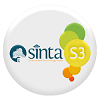UPI National Education Museum as a Learning Resource and Space for Edutourism-Based Continuing Education (From Ordinary To Autonomous Unit)
Abstract
Abstract When the Covid C-19 Pandemic hit the world, all museums in various parts of the world were closed, including the National Education Museum of Universitas Pendidikan Indonesia (UPI National Education Museum). This paper aims to explore how the UPI National Education Museum metamorphosed, and passed the pandemic period by continuing to provide services to the academic community, in its function as a learning resource and edutourism-based sustainable education space. Through a qualitative descriptive method with data collection techniques in the form of documentation studies and Focus Group Discussions (FGDs) with inductive analysis, it was found that the UPI National Education Museum in addition to carrying out its functions in the fields of education, research and recreation, also expanded it towards triple helix cooperation, involving the private sector / DUDI (Business and Industry World). To be able to carry out its mission, the UPI National Education Museum must change its status from an ordinary unit to an autonomous unit. This research recommendation by the university policy holders (UPI) is used as one of the academic texts in deciding the UPI National Museum to be the only unit in UPI that is autonomous with flexibility in presenting programs from outside, especially in collaboration with the private sector, known as triple helix. This means that the UPI National Museum has followed the trend of world museums, which carry out re-imagine and recovery movements when Covid C-19 begins to subside.
Keywords
Full Text:
PDFReferences
Best, J. W. (1982). Metodologi Penelitian dan Pendidikan. Usaha Nasional.
Creswell, J. W. (2019). Desain Penelitian: Pendekatan Kualitatif, Kuantitatif, dan Campuran. Yayasan Mitra Netra.
Deng, W., Chiu, D. K. W., & Ho, K. K. W. (2022). Contribution of Literature Thematic Exhibition to Cultural Education: A Case Study of Jin Yong’s Gallery. Micronesian Educators, 32, 14–26.
Galvao, A., Mascarenhas, C., Marques, C., Ferreira, J., & Ratten, V. (2019). Triple helix and its evolution: a systematic literature review. Journal of Science and Technology Policy Management, 10(3), 812–833. https://doi.org/10.1108/JSTPM-10-2018-0103
Giannini, T., & Bowen, J. P. (2022). Museums and Digital Culture: From Reality to Digitality in the Age of COVID-19. Heritage, 5(1), 192–214. https://doi.org/10.3390/heritage5010011
Hamid, R. S., Anwar, S. M., & Lumoindong, Y. (2019). Using the triple helix model to determine the creativity a capabilities of innovative environment. IOP Conference Series: Earth and Environmental Science, 343(1), 12144.
Huang, P.-S., Paulino, Y. C., So, S., Chiu, D. K. W., & Ho, K. K. W. (2022). Guest editorial: COVID-19 pandemic and health informatics Part 2. Library Hi Tech, 40(2), 281–285.
ICOM. (2021). The Future of Museums: Recover and Reimagine. https://imd.icom.museum/past-editions/the-future-of-museums/
Jaelani, A. (2019). Triple Helix sebagai model bagi inovasi pendidikan tinggi: Analisis logika kelembagaan dalam pengembangan kewirausahaan dan ekonomi.
Kunzmann, K. R. (2020). Smart cities after covid-19: Ten narratives. DisP-The Planning Review, 56(2), 20–31.
Maulipaksi, D. (2018). Selamat Hari Warisan Budaya! Warisan Budaya untuk Generasi Penerus Bangsa. Kementerian Pendidikan, Kebudayaan, Riset, Dan Teknologi - Republik Indonesia. https://www.kemdikbud.go.id/main/blog/2018/04/selamat-hari-warisan-budaya-warisan-budaya-untuk-generasi-penerus-bangsa
Meng, Y., Chu, M. Y., & Chiu, D. K. W. (2023). The impact of COVID-19 on museums in the digital era: practices and challenges in Hong Kong. Library Hi Tech, 41(1), 130–151.
Peraturan Pemerintah (PP) Nomor 15 Tahun 2014 tentang Statuta Universitas Pendidikan Indonesia, (2014).
Prabowo, M. R., & Supardi, S. (2022). Pemanfaatan Museum dan Situs Cagar Budaya di Pontianak Sebagai Sumber Belajar Sejarah Indonesia. Criksetra: Jurnal Pendidikan Sejarah, 11(1), 1–14.
Rukmana, I. (2019). Strategi Pengelolaan Museum Benteng Vredeburg sebagai Wisata Warisan Budaya di Yogyakarta (The Management Strategy of the Vredeburg Fort Museum as Cultural Heritage Tourism in Yogyakarta). Jurnal Tatat Kelola Seni, 5(2), 103–119.
Rusli, M. (2021). Merancang Penelitian Kualitatif Dasar/Deskriptif dan Studi Kasus. Al-Ubudiyah: Jurnal Pendidikan Dan Studi Islam, 2(1), 48–60.
Sinaga, D. (2017). Mengasah Ilmu Fotografi di Museum Pendidikan di UPI. CNN Indonesia. https://www.cnnindonesia.com/edukasi/20170405114906-445-205084/mengasah-ilmu-fotografi-di-museum-pendidikan-di-upi
DOI: https://doi.org/10.17509/historia.v6i2.63568
Refbacks
- There are currently no refbacks.
Copyright (c) 2024 Historia: Jurnal Pendidik dan Peneliti Sejarah
INDEXED
TOOLS

This work is licensed under a Creative Commons Attribution-ShareAlike 4.0 International License.
Alamat Redaksi: Gedung Numan Soemantri, FPIPS UPI, Departemen Pendidikan Sejarah, Lantai 2, Jl. Dr. Setiabudhi No 229 Bandung, 40154






